Is Safety Compliance Putting Your Project in Jeopardy? Examining the Essentials of DOE’s Worker Safety and Health Program
July 02, 2024 —
Lucas T. Daniels & Benjamin J. Hochberg - ConsensusDocsMost contractors are familiar with the myriad of labor and safety regulations intended to safeguard the health and safety of workers. Many contractors will be equally familiar with the maze of forms and reports, the maintenance of safety personnel, safety walks and talks, and the many other measures intended to prevent and prepare for accidents. Less known among contractors and construction industry leaders is the regulatory framework establishing safety requirements and the ramifications of ignoring safety-related rules. Knowing and understanding the jurisdiction and authority of the agencies monitoring safety compliance on your project is critical to avoiding administrative ordeals and audits that could add days or weeks to your schedule and frustrate your staff.
The Department of Energy’s Worker Safety and Health Program
Under the Occupational Safety and Health Act of 1970, as amended (OSH), the Department of Labor’s Occupational Safety and Health Administration (OSHA) issues and enforces occupational health and safety regulations. OSHA, or a state with approval from OSHA, regulates the occupational health and safety of private sector employees unless another federal agency has and exercises its statutory authority to regulate. Several federal agencies have developed their own safety programs and conduct their own enforcement of those regulations independent of OSHA. For example, projects receiving funding from the Department of Energy (DOE) are subject to additional oversight of their safety programs by this agency. DOE directly manages its own Worker Safety and Health Program (WSHP), codified at 10 C.F.R. § 851, et seq., and will enforce compliance with its WSHP at all DOE sites. A “DOE site” is defined as a DOE-owned or -leased area or location or other area or location that DOE controls, where a contractor performs activities and operations in furtherance of a DOE mission. This broad definition encompasses a wide range of facilities and operations, including those not directly managed by the DOE but still under its control. The contractor at such a site must be aware of the specific requirements and procedures of the DOE under the WSHP and the ramifications of violating these regulations.
Reprinted courtesy of
Lucas T. Daniels, Peckar & Abramson, P.C and
Benjamin J. Hochberg, Peckar & Abramson, P.C
Mr. Daniels may be contacted at ldaniels@pecklaw.com
Mr. Hochberg may be contacted at bhochberg@pecklaw.com
Read the court decisionRead the full story...Reprinted courtesy of
Insurance for Large Construction Equipment Such as a Crane
July 30, 2018 —
David Adelstein - Florida Construction Legal UpdatesMany, many projects require the use of a crane. The skyline is oftentimes filled with the sight of cranes—one after the other. Most of the time, the cranes are leased from an equipment supplier. What happens if the crane (or any large, leased equipment) gets damaged?
I wrote an article regarding a builder’s risk carrier NOT covering damage to a crane from a storm based on a common exclusion. Another case, Ajax Bldg. Corp. v. Hartford Fire Ins. Co., 358 F.3d 795 (11th Cir. 2004), had a similar result.
In this case, a prime contractor leased a crane from an equipment supplier. The crane was used by the structural concrete subcontractor. The crane collapsed during the subcontractor’s work. The supplier sued both the contractor and subcontractor. The prime contractor was defended under a contractor’s equipment liability policy and the subcontractor was defended under a general liability policy it procured for its work on the project. Ultimately, a settlement was reached where the subcontractor’s liability insurer paid a bulk of the damage.
Read the court decisionRead the full story...Reprinted courtesy of
David Adelstein, Kirwin NorrisMr. Adelstein may be contacted at
dma@kirwinnorris.com
Court Bars Licensed Contractor From Seeking Compensation for Work Performed by Unlicensed Sub
June 06, 2022 —
Garret Murai - California Construction Law BlogIt all started with a tree.
A eucalyptus tree to be exact.
What followed is one of the more important cases to be decided under Business and Professions Code section 7031 in recent years. Yes, that Section 7031. The statute variously described by the state’s courts as “harsh[ ],” draconian” and “unjust,” but, importantly, nevertheless valid.
Under Section 7031, an unlicensed contractor is barred from seeking compensation for work requiring a contractor’s license. This has been called the “shield.” However, in addition to the “shield,” project owners can also employ Section 7031’s “sword,” and seek disgorgement of all monies paid to an unlicensed contractor. Section 7031’s “shield” and “sword” applies even if the project owner knew that the contractor was unlicensed. They also apply even if the unlicensed contractor’s work was flawless. And they also apply even if a contractor was unlicensed during a portion of its work. This is because, as courts have stated, Section 7031 is a consumer protection statute intended to protect the public from unlicensed contractors and applies irrespective of the equities.
Read the court decisionRead the full story...Reprinted courtesy of
Garret Murai, Nomos LLPMr. Murai may be contacted at
gmurai@nomosllp.com
Federal District Court Finds Coverage Barred Because of Lack of Allegations of Damage During the Policy Period and Because of Late Notice
December 29, 2020 —
Robert Dennison - Traub LiebermanIn American Bankers Ins. Co. of Florida v. National Fire Ins. Co. of Hartford, 2020 WL 5630017 (Sept. 21, 2020), the Northern District of California of the United States District Court had occasion to consider whether allegations in an underlying complaint triggered a duty to defend and a late notice defense to coverage.
The underlying actions were a suit against the City of Walnut Creek for damages from flooding allegedly caused by the City’s failure to develop and maintain its storm drains.The City settled the cases then sued its liability insurers who issued its coverage in the period 1968 to 1986 for indemnification of the amounts spent to defend and settle the cases.The published decision involved three Travelers’ policies issued to the City between 1968 and 1976, as to which Travelers sought summary judgment as to the lack of coverage in its policies.
The district court first found that the definition of an “occurrence” in the policies, in one policy “an event or a continuous or repeated exposure to conditions which causes injury to person or damage to property during the policy period” and in the other two “an accident, including injurious exposure to conditions, which results during the period this policy is in effect, in bodily injury or property damage,” fell within the rule of Montrose Chemical Corp. v. Admiral Ins. Co. (1995) 10 Cal.4th 645, that injury or damage during the policy period must occur in order for the policy to be triggered.The court agreed with Travelers that while there were allegations of flooding for many years, the only claims/allegations of property damage were for the period 2000 and later.Therefore the property damage coverage in the policies was never triggered.
Read the court decisionRead the full story...Reprinted courtesy of
Robert Dennison, Traub LiebermanMr. Dennison may be contacted at
rdennison@tlsslaw.com
Disgruntled Online Reviews of Attorney by Disgruntled Former Client Ordered Removed from Yelp.com
June 30, 2016 —
Renata L. Hoddinott & David W. Evans – Haight Brown & Bonesteel LLPThe Court of Appeal of the State of California – First Appellate District in Hassell v. Bird (6/7/16 – Case No. A143233) affirmed an order from a judgment in favor of an attorney and her firm and against a disgruntled former client directing non-party Yelp.com to remove defamatory reviews posted to its site.
Attorney Dawn Hassell (“Hassell”) filed suit against Ava Bird (“Bird”) arising out of Hassell’s brief legal representation. The attorney/client relationship lasted a total of 25 days after which Hassell withdrew from the representation because of difficulties communicating with Bird and Bird expressed dissatisfaction with Hassell. When legal representation terminated, Bird had 21 months before the expiration of the statute of limitations on her personal injury claim.
Reprinted courtesy of
Renata L. Hoddinott, Haight Brown & Bonesteel LLP and
David W. Evans, Haight Brown & Bonesteel LLP
Mr. Evans may be contacted at devans@hbblaw.com
Ms. Hoddinott may be contacted at rhoddinott@hbblaw.com
Read the court decisionRead the full story...Reprinted courtesy of
Construction Firm Sues Town over Claims of Building Code Violations
November 06, 2013 —
CDJ STAFFParadigm Development and Construction LLC has sued Bristol Township, Pennsylvania over the allegation that town building officials colluded with their clients to issue building code violations after Paradigm prepared to sue the clients. John and Patricia Conard hired Paradigm to construct an addition to their home. During the process, the work went through nine inspections before Paradigm stopped work over a payment dispute.
Some months later, Bristol Township issued a notice that Paradigm had 37 violations of the building code. Paradigm alleges that the source was a set of photographs provided by the Conards to the building officials. The lawsuit states that Paradigm “was not notified of any construction deficiencies at the Conard property, and was not provided with an opportunity to discuss, defend or refute the allegations of the Municipal Defendants that Plaintiff has violated the Bristol Building code.”
The violation notice was withdrawn a few months later.
Read the court decisionRead the full story...Reprinted courtesy of
What I Love and Hate About Updating My Contracts From an Owners’ Perspective
July 25, 2022 —
ConsensusDocsThe Construction Owners Association of America
(COAA) is the largest association of construction owners in the United States. COAA just held its Spring Connect conference in downtown Baltimore on the University of Maryland, Baltimore (UMB) campus. One session featured “What I Love and Hate About Updating My Contracts from an Owners’ Perspective.”
ConsensusDocs’ Executive Director & Senior Counsel Brian Perlberg spoke on a panel with Joe Cleves of Taft Law and Pen Wolf from the Cleveland Clinic.
Pen Wolf from Cleveland Clinic outlined the process he used to update his contracts recently. The Cleveland Clinic builds facilities annually and owns different facilities at different locations. The clinic employs over 75,000 employees. For an owner with a broad reach like the Cleveland Clinic, Wolf recommended using outside counsel with construction expertise to update contracts. He concluded that while it was a significant effort, the endeavor to update the Clinic’s contracts was absolutely worth the time commitment and expense. Wolf shared that updating the Clinic’s contracts has generated positive reviews internally and externally. Now their written agreements better reflect their business practices in their construction design and construction program.
Read the court decisionRead the full story...Reprinted courtesy of
ConsensusDocs
20 Years of BHA at West Coast Casualty's CD Seminar: Chronicling BHA's Innovative Exhibits
May 03, 2018 —
Beverley BevenFlorez-CDJ STAFFThe Bert L. Howe & Associates, Inc., (BHA) exhibit has been a fixture at West Coast Casualty's Construction Defect Seminar since the mid-1990's. Through the years, BHA has updated their display, but no matter what year, you could count on the BHA exhibit to provide a not-to-be-missed experience.
2008-BHA's sleek, rear projection display includes a screen that promotes the firm's capabilities that can be seen throughout the exhibit hall. This would be one of many innovations BHA has brought to the West Coast Casualty seminar.
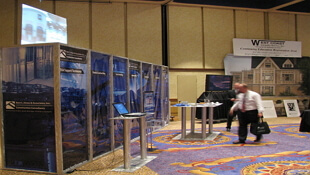
2009-With the success of the rear screen projection, BHA adds additional monitors to provide attendees with more information about BHA.
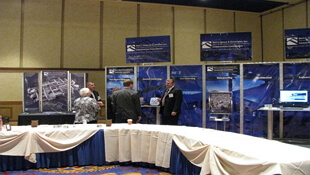
2010-BHA adds an interpretive professional development exhibit targeted to Building Envelope issues allowing adjusters and other non-construction professionals hands on access to the systems and components at the heart of many related such claims.


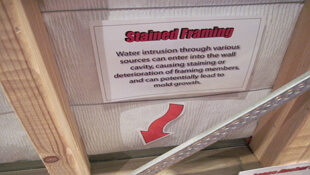
2011-BHA's Swing for Charity challenge is born.

2012-Always innovating, BHA expands its rear projection and professional development offerings to West Coast attendees.

2013-BHA showcases additional capabilities with a twenty-four foot, custom, convex, immersive video experience.

2014-BHA adds an iPhone display to give a hands-on demonstration of their data collection methods.

2015-BHA's twenty-four foot , custom, convex, immersive video experience was elevated with two additional rear projection screens, reflecting BHA's newest capabilities and services.

2016-BHA dazzles attendees with their new exhibit comprised of more than 15 integrated, high definition, LCD displays. iPads are stationed on tables to conveniently demonstrate BHA's data collection processes.

2017-BHA's Swing for Charity Golf Challenge raised $2,225.00 for the National Coalition for Homeless Veterans and $1,900 for Final Salute.
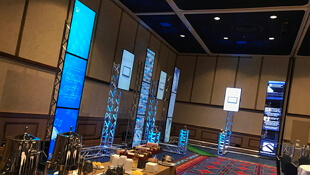
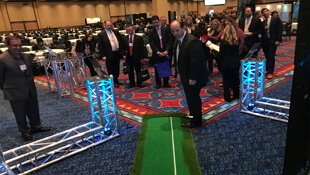
Read the court decisionRead the full story...Reprinted courtesy of




































































